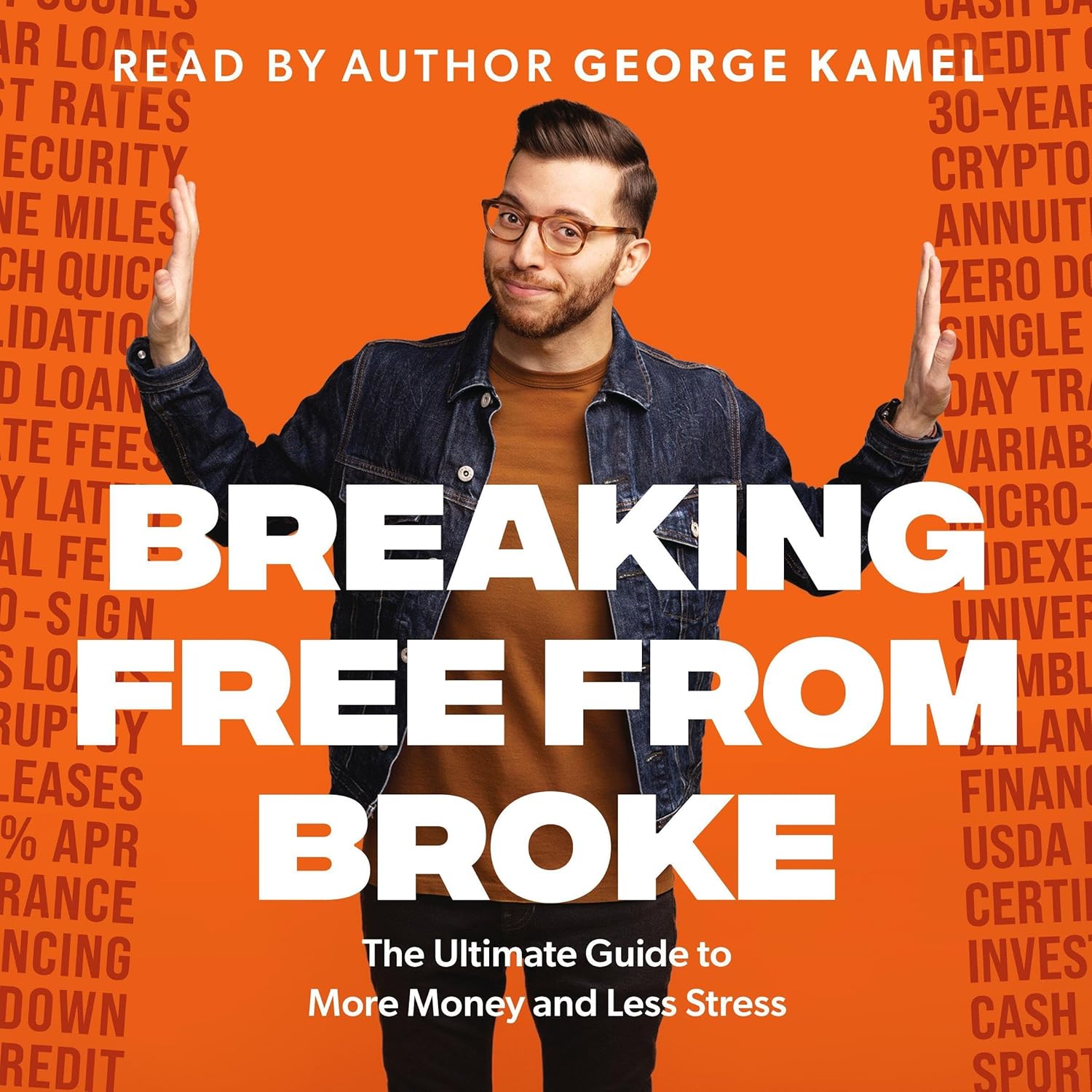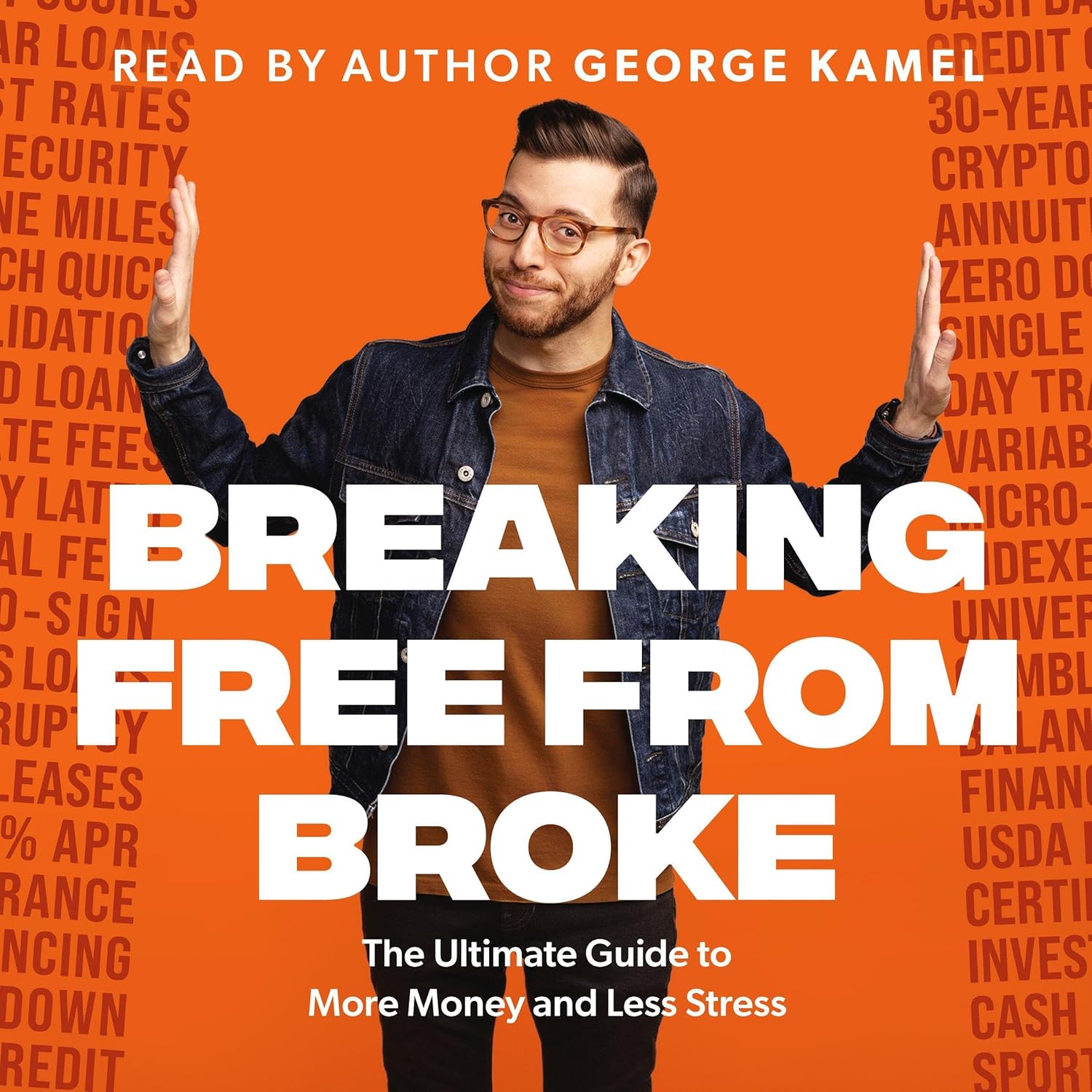When I first picked up Breaking Free from Broke by George Kamel, the engaging title and its focus on tackling the pervasive household debt issue in America drew me in. I’m a big fan of personal finance books, especially those that offer relatable advice to younger audiences navigating today’s financial landscape. George’s promise to debunk financial myths and share a personal journey from a negative net worth to millionaire status intrigued me; I wanted to see if his strategies would resonate.
From the outset, I appreciated George’s conversational tone and humor. The book deftly combines genuine personal anecdotes with practical financial guidance, making complex topics feel accessible. As one reader put it, George’s “wit and banter” keep the narrative lively, transforming what could be a tedious financial manual into a page-turner that encourages readers to rethink their relationship with money. This balance of entertainment and education fulfills the book’s promise of engaging readers while delivering crucial financial insights.
One of the standout aspects for me was George’s candidness in addressing the toxic financial system filled with lies—like the idea that student loans are a necessary evil or that credit cards are a must for good credit. His arguments are well-supported and resonate strongly with those who feel ensnared by the traps of modern consumerism. I found myself nodding along as he challenged these beliefs, echoing sentiments expressed by other readers who described the book as “counter-cultural and trend-defying.” The persuasive statistics and personal experiences made for a compelling read that shifted my mindset about debt and financial success.
However, there were aspects that could have been improved upon. While the humor often lightened the tone, it sometimes detracted from the seriousness of the subject matter. For some readers, like JG, the focus on unnecessary financial details/events may have felt excessive. Although I enjoyed the light-hearted approach, I can see how it might not resonate with those looking for strictly hardcore financial advice. There were moments I found myself skimming certain sections, particularly those that felt repetitive or overly detailed, which echoed the sentiments of some reviews expressing a desire for more streamlined content.
Additionally, while George offers insightful advice, some chapters seemed less applicable for a non-American audience. As a reader outside the U.S., I found some sections on student loans and mortgages less relevant, which did lead to a bit of skimming. Despite this, I felt that the overarching principles, such as budgeting strategies and the importance of debt relief, were universally relevant and could be adapted to various financial landscapes.
Overall, my experience with Breaking Free from Broke was positive. Its blend of humor, practicality, and well-researched content left me feeling more empowered regarding my financial decisions. The engaging writing made it hard to put down, making it a quick yet meaningful read. I agree with readers who suggest that this book should be recommended to every young adult at the beginning of their financial journey. By following George’s principles, I genuinely believe many can buck the toxic money system and steer toward financial freedom.
In conclusion, I wholeheartedly recommend Breaking Free from Broke. George Kamel’s entertaining and insightful narrative offers invaluable lessons for anyone feeling overwhelmed by their financial situation. While there were minor drawbacks, they didn’t overshadow the actionable advice and refreshing perspective presented throughout the book. If you’re ready to rethink your financial habits and bust some myths, this book is a fantastic place to start.
Discover the secrets to financial freedom and stress-free living with “Breaking Free from Broke.” >>








